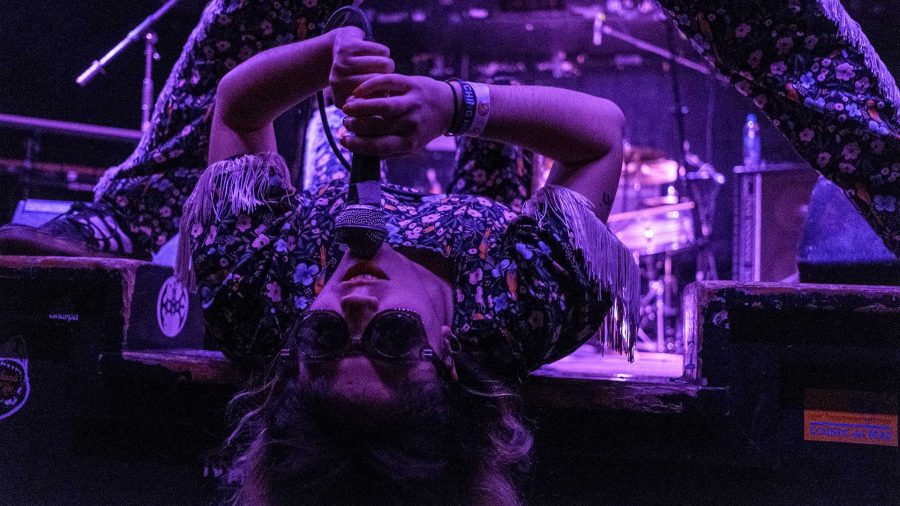“[I wanted to show that] it is possible for people from Iowa to do this type of thing,” Andre Wright said.
Over the weekend, Iowa City played host to a new sort of witching hour. Witching Hour is a weekend-long festival organized by several staff members of the Englert, who helped create a weekend of art, exploration, and collaboration.
On Oct. 21, Emily Carlson and Wright screened their documentary, New Perspective, which follows the two Iowa designers as they look through every contact they have in order to hopefully begin to change the New York Fashion Week expectations and push themselves as designers through their collaboration.
RELATED: Witching Hour to feature writers of color
Witching Hour creates an environment in which art can thrive. This environment begins by bringing in artists from all over the country from different disciplines and backgrounds. Together, artists such as DJ Spooky, Beach Fossils; authors such as Jeffrey Cranor and Joseph Fink; and comedians such as Hari Kondabolu and Aparna Nancherla created a weekend-long experience.
Many discussions took place surrounding local concerns such as small-town journalism, Iowa bee populations, women of color in Iowa City, and racial trauma, among others. But the festival also looked outside the fields of the Midwest.
Susan Patterson Plank
Susan Patterson Plank, the executive director of the Iowa Newspaper Association, thinks of her job as more of a chance to save democracy than just a head of an organization. She spoke at Iowa City Public Library, 123 S. Linn St., on Oct. 20.
Fascinating things seem to happen to small-town journalism, like a tiny Iowa paper winning a Pulitzer Prize in 2016. Plank took this opportunity to look at the data on readership around the state to debunk myths surrounding local journalism. Part of this presentation also analyzed the threats and opportunities that surround hyper-local, rural journalism.
In Iowa, there are 277 newspapers, making it one of the highest newspapers per capita in the country. Each town has at least two different newspapers, with 2.4 million readers in the state in total.
During her research, Plank looked at the rates of readerships for among age groups. The data showed, perhaps surprisingly, 72.4 percent of residents ages 18 to 24 read newspapers.
“Newspapers build community, continuity, credibility, and consensus,” Park said during her presentation. “Many of them are locally owned, and even if they’re not, they have passion.”
Writers of Color Series
Witching Hour also aims to bring a diverse set of voices into the Iowa City area, and one way it achieved this through two panels on writers of color.
On Oct. 21, Marquise Jackson, Sarah Matthews, Jack Jung, Kamden Hilliard, Akwi Nji, Tiffany Tucker, and Danez Smith spoke at the Englert, 221 E. Washington St. On Sunday, there was also a reading at RadInc., 123 E. Washington St.
Kiese Laymon, a distinguished visiting professor in the University of Iowa Nonfiction Writing Program, said some of the most powerful acts come from the communities surrounding people of color.
One way to summarize the unique experiences that Witching Hour offers is with a quote from Wright. Individuality is undeniable. Being unique is now unavoidable and is now rewarded instead of punished.
“[Fashion] is not looking like everyone else. It’s just being ‘you,’ ” said Wright. “Being authentic is the best style you can have.”



